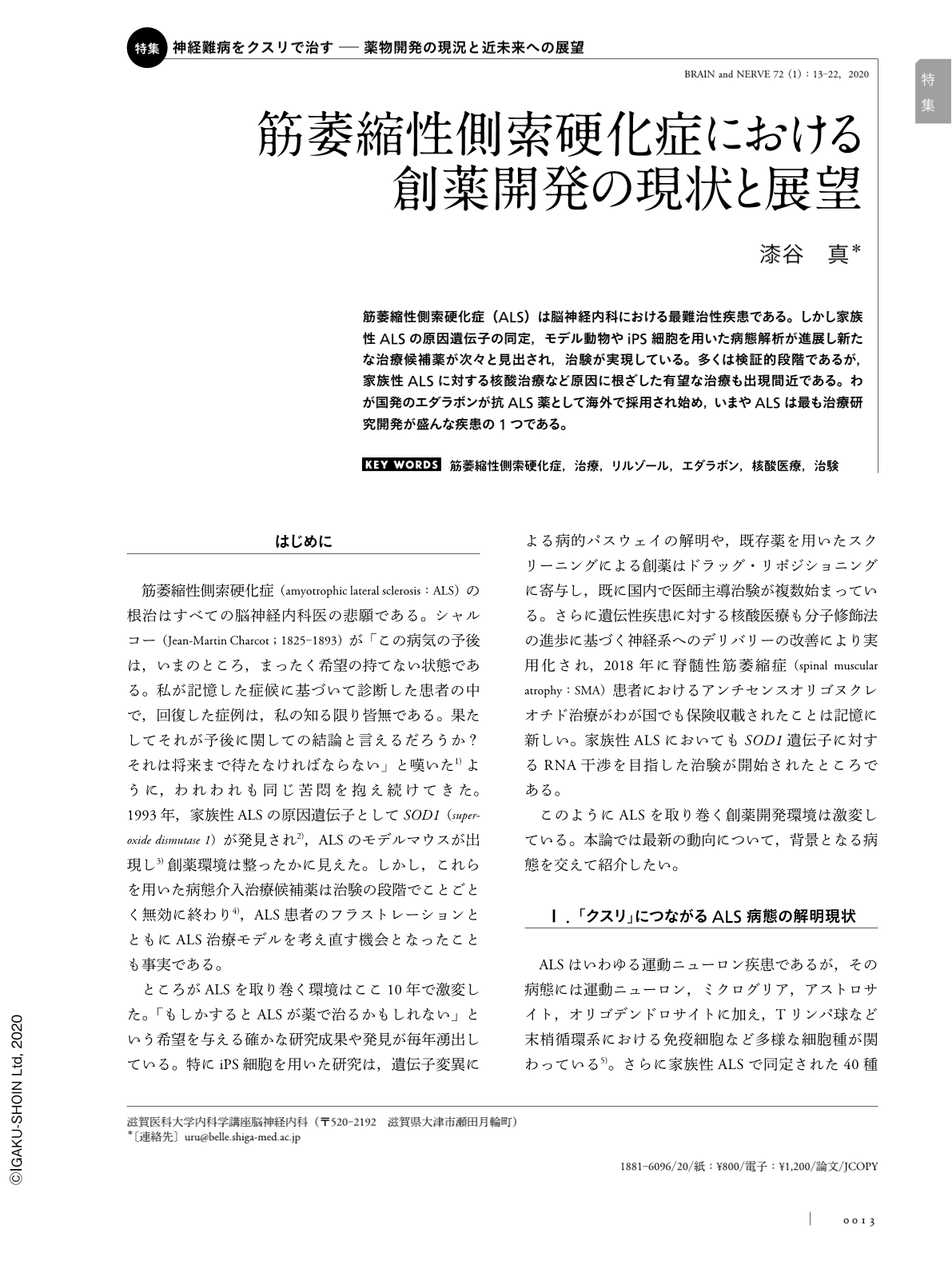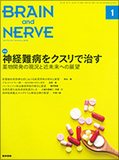Japanese
English
- 有料閲覧
- Abstract 文献概要
- 1ページ目 Look Inside
- 参考文献 Reference
- サイト内被引用 Cited by
筋萎縮性側索硬化症(ALS)は脳神経内科における最難治性疾患である。しかし家族性ALSの原因遺伝子の同定,モデル動物やiPS細胞を用いた病態解析が進展し新たな治療候補薬が次々と見出され,治験が実現している。多くは検証的段階であるが,家族性ALSに対する核酸治療など原因に根ざした有望な治療も出現間近である。わが国発のエダラボンが抗ALS薬として海外で採用され始め,いまやALSは最も治療研究開発が盛んな疾患の1つである。
Abstract
Amyotrophic lateral sclerosis (ALS) is a devastating neurodegenerative disease characterized by progressive muscle wasting and weakness. Riluzole was the sole drug available for treating ALS until 2015, when edaravone was approved as a new anti-ALS drug. Recent discoveries of the disease-causal genes and proteins, as well as the rapid advancement of induced pluripotent stem (iPS) cell manipulations, drug deliveries, and molecular modifications have provided diverse and promising drug candidates. In particular, antisense-oligonucleotide therapy appears to significantly prevent disease progression when introduced early. Moreover, the in vitro modeling of ALS using patients' own iPS cells enables effective screening of approved drugs. Drug repositioning is a robust short-cut to bedside use in patients with ALS, due to the availability of data for safety concerns. Currently, five investigator-initiated drug trials are underway in Japan. These include trials of hepatocyte growth factor, perampanel, ultra-high-dose methylcobalamin, ropinirole, and bosutinib. This is a review of new ALS drugs that are either currently available or in on-going trials. We additionally review the pathogenic pathways that these drugs target.

Copyright © 2020, Igaku-Shoin Ltd. All rights reserved.


